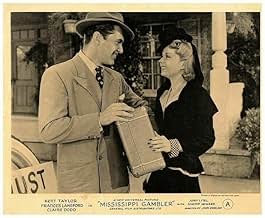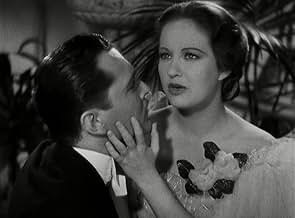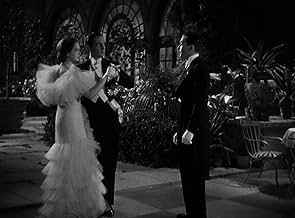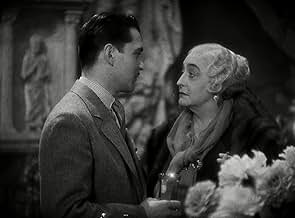Kent Taylor(1906-1987)
- Actor
- Writer
- Soundtrack
Born Louis William Weiss on May 11, 1907, Kent Taylor was a modestly
popular "B" actor of the 1930's and 1940's. The tall, dark and handsome
leading man who sported rugged looks, a slick, pencil-thin mustache and
solid physique, was star material with the potential and durability of
Clark Gable and Errol Flynn, but lacked their consistent
leading man quality and charisma. An avid outdoorsman, Taylor churned
out over 110 films during his lengthy career, appearing in a number of
quality "A" pictures as a second lead.
Born just southeast of Nashua, Iowa, he was a son of farmers. As a teenager, he performed in several high school plays. The family then moved to Waterloo, Iowa, where he worked as a window trimmer in a ladies' clothing shop. After a brief move to Chicago, the family relocated to Los Angeles, where he and his father started an awning company. Taylor pursued acting as a profession after being introduced to director Henry King. After an unbilled debut in The Magnificent Lie (1931), he apprenticed for a couple of years in bit parts. He peaked in the 1930's with prominent support roles in Merrily We Go to Hell (1932) with Fredric March and Sylvia Sidney, I'm No Angel (1933), as one of Mae West's earnest pursuers, the classic Death Takes a Holiday (1934), (again with Fredric March), the Will Rogers vehicles David Harum (1934) and The County Chairman (1935), and Ramona (1936), (directed by his old friend, Henry King), top-lining Loretta Young and Don Ameche.
Taylor then starred in a modest succession of "B" programs with Love in a Bungalow (1937), Pirates of the Skies (1939), Repent at Leisure (1941), Mississippi Gambler (1942), Alaska (1944), The Crimson Key (1947) and The Sickle or the Cross (1949) which, at the very least, kept him busy and in the public eye. More noticeable during this period was his portrayal of Doc Holiday in Tombstone: The Town Too Tough to Die (1942), opposite Richard Dix's Wyatt Earp.
With his film career on the decline, Taylor turned more and more to TV, becoming the medium's Boston Blackie (1951) for a couple of seasons, a role that followed in the popular footsteps of Chester Morris, (who starred in an earlier series of Boston Blackie films as the urbane master thief-cum-detective), followed with a lead in the series The Rough Riders (1958). Taylor was a frequent visitor on the sets of popular western series, including Zorro (1957), Laramie (1959), The Rifleman (1958) and Rango (1967). Toward the end of his career, however, the elderly actor took a bizarre John Carradine-like turn into Grade "Z" projects. Some of them--including horror movies like The Crawling Hand (1963), Brides of Blood (1968), Satan's Sadists (1969), Hell's Bloody Devils (1970), Blood of Ghastly Horror (1967) and Girls for Rent (1974)--achieved cult infamy as some of Hollywood's most notorious "turkeys." Following a series of heart operations, Taylor died at the age of 79.
Born just southeast of Nashua, Iowa, he was a son of farmers. As a teenager, he performed in several high school plays. The family then moved to Waterloo, Iowa, where he worked as a window trimmer in a ladies' clothing shop. After a brief move to Chicago, the family relocated to Los Angeles, where he and his father started an awning company. Taylor pursued acting as a profession after being introduced to director Henry King. After an unbilled debut in The Magnificent Lie (1931), he apprenticed for a couple of years in bit parts. He peaked in the 1930's with prominent support roles in Merrily We Go to Hell (1932) with Fredric March and Sylvia Sidney, I'm No Angel (1933), as one of Mae West's earnest pursuers, the classic Death Takes a Holiday (1934), (again with Fredric March), the Will Rogers vehicles David Harum (1934) and The County Chairman (1935), and Ramona (1936), (directed by his old friend, Henry King), top-lining Loretta Young and Don Ameche.
Taylor then starred in a modest succession of "B" programs with Love in a Bungalow (1937), Pirates of the Skies (1939), Repent at Leisure (1941), Mississippi Gambler (1942), Alaska (1944), The Crimson Key (1947) and The Sickle or the Cross (1949) which, at the very least, kept him busy and in the public eye. More noticeable during this period was his portrayal of Doc Holiday in Tombstone: The Town Too Tough to Die (1942), opposite Richard Dix's Wyatt Earp.
With his film career on the decline, Taylor turned more and more to TV, becoming the medium's Boston Blackie (1951) for a couple of seasons, a role that followed in the popular footsteps of Chester Morris, (who starred in an earlier series of Boston Blackie films as the urbane master thief-cum-detective), followed with a lead in the series The Rough Riders (1958). Taylor was a frequent visitor on the sets of popular western series, including Zorro (1957), Laramie (1959), The Rifleman (1958) and Rango (1967). Toward the end of his career, however, the elderly actor took a bizarre John Carradine-like turn into Grade "Z" projects. Some of them--including horror movies like The Crawling Hand (1963), Brides of Blood (1968), Satan's Sadists (1969), Hell's Bloody Devils (1970), Blood of Ghastly Horror (1967) and Girls for Rent (1974)--achieved cult infamy as some of Hollywood's most notorious "turkeys." Following a series of heart operations, Taylor died at the age of 79.

![Watch Trailer [OV]](https://m.media-amazon.com/images/M/MV5BOGFkMzUzZTYtMWEyYy00MzRjLWE2ZTktYjZkNTdiOTJjZTU2XkEyXkFqcGdeQXRyYW5zY29kZS13b3JrZmxvdw@@._V1_QL75_UX500_CR0,47,500,281_.jpg)































